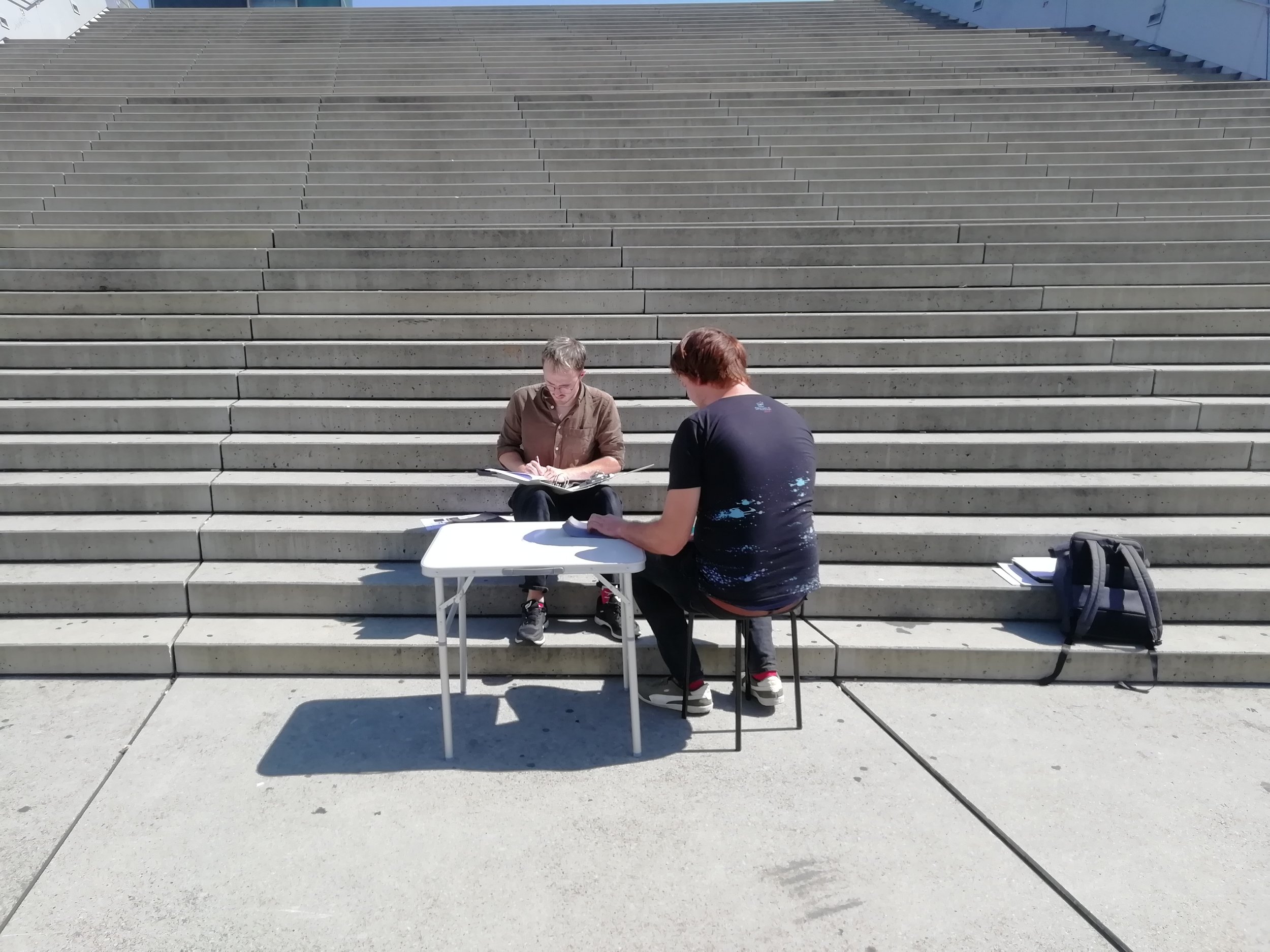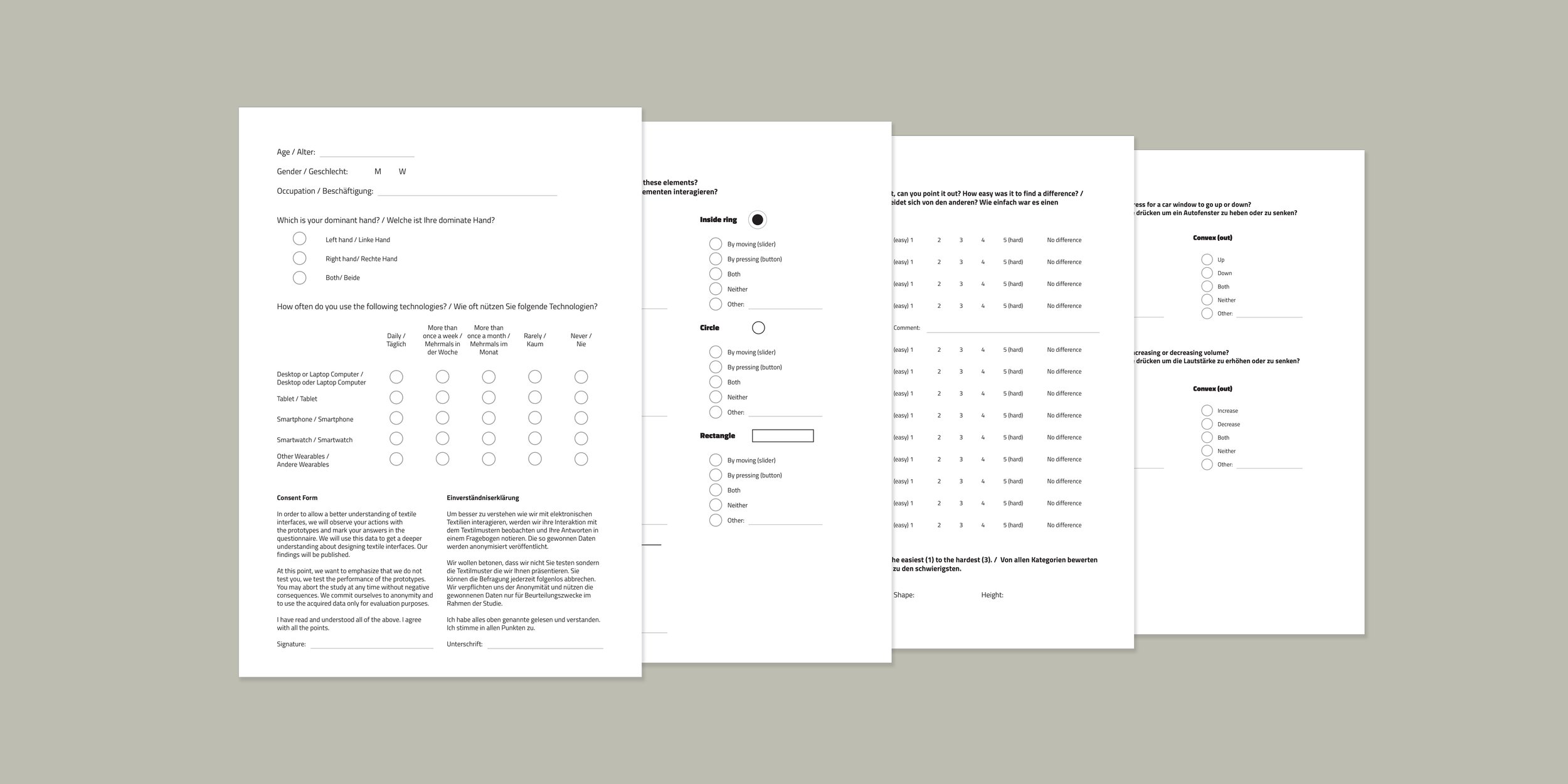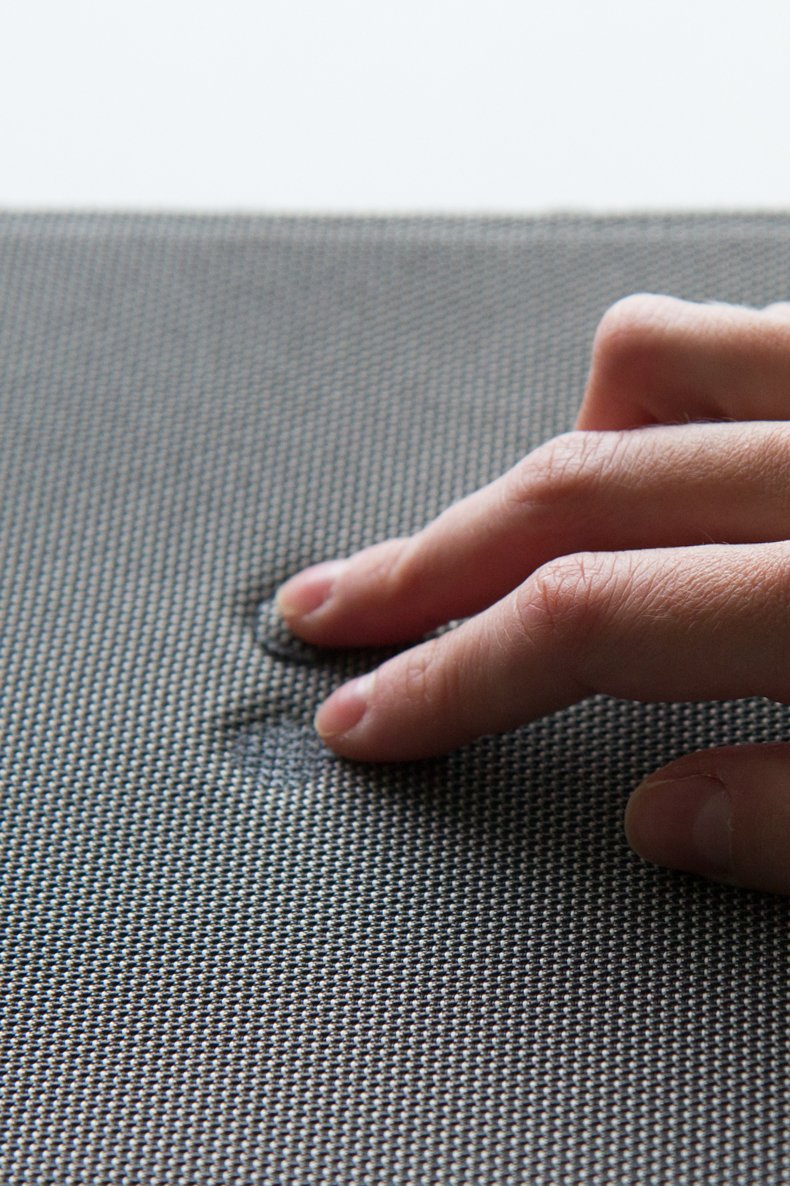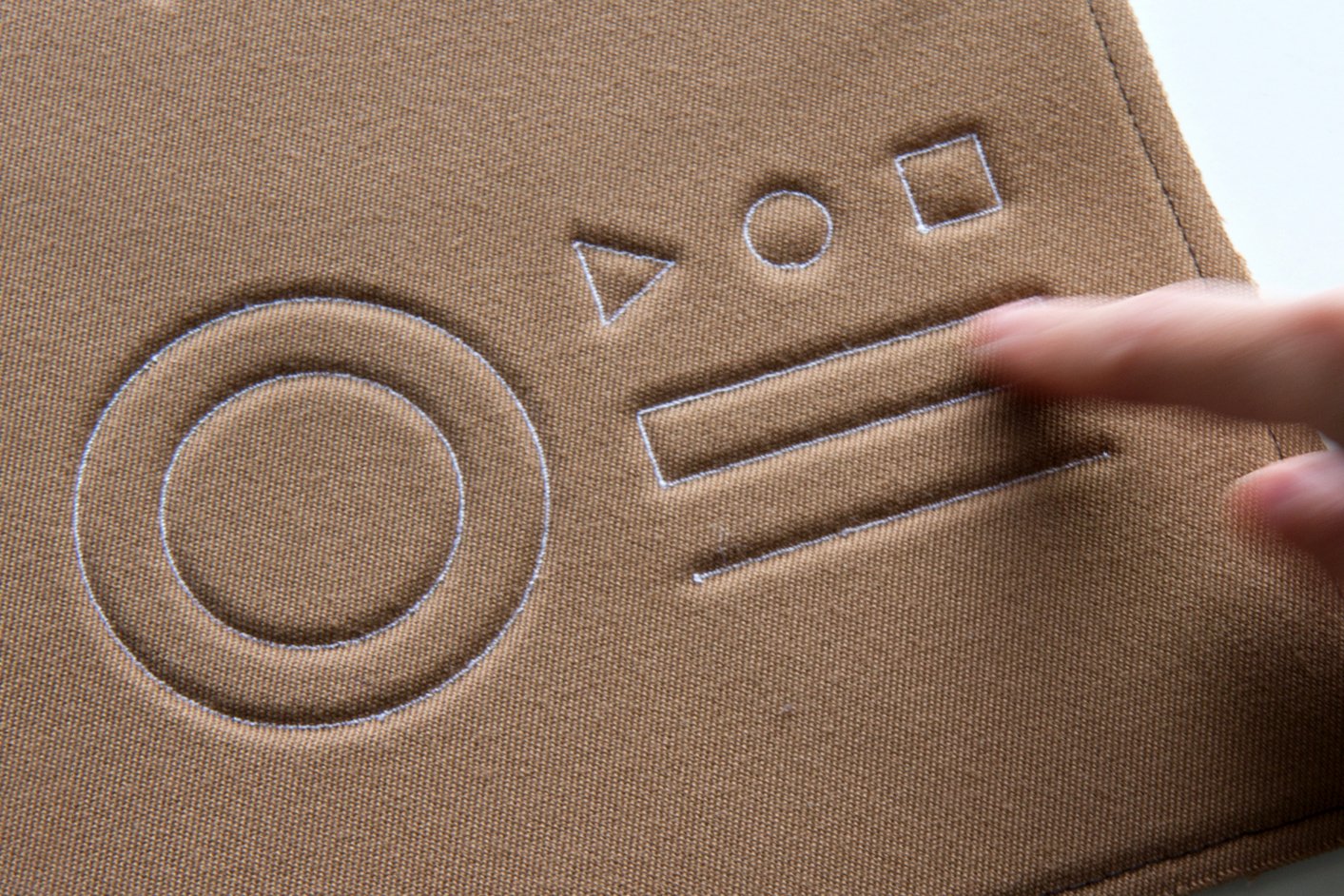Smart textile interfaces
Shortly after joining a smart textile research lab, I started creating textile samples and prototypes. Although the focus of the lab was mostly on their functional side, it quickly opened the question of ‘How will users know how to interact with this?’ We had some intuitive ideas on how we could communicate interactivity in this medium, which led us to carry out a formal design investigation of interactive textile elements.
We started by conducting expert interviews, where we discussed some design guidelines from other fields and speculated how they could be applied to textile interfaces. This led to a set of specific design statements, that we then tested through a usability study with everyday users. The study consisted of a set of tasks users needed to perform on the textile prototypes we provided.
As a conclusion of this study, we could define five recommendations for designing interactive textile elements.
They cover:
the minimal tactile contrast between textures, heights, and shapes;
the minimal recognizable size of elements;
perception of concave and convex shapes as interactive elements;
indicators of interaction based on the shape of elements; and
our fairly poor recognition of tactile icons.






